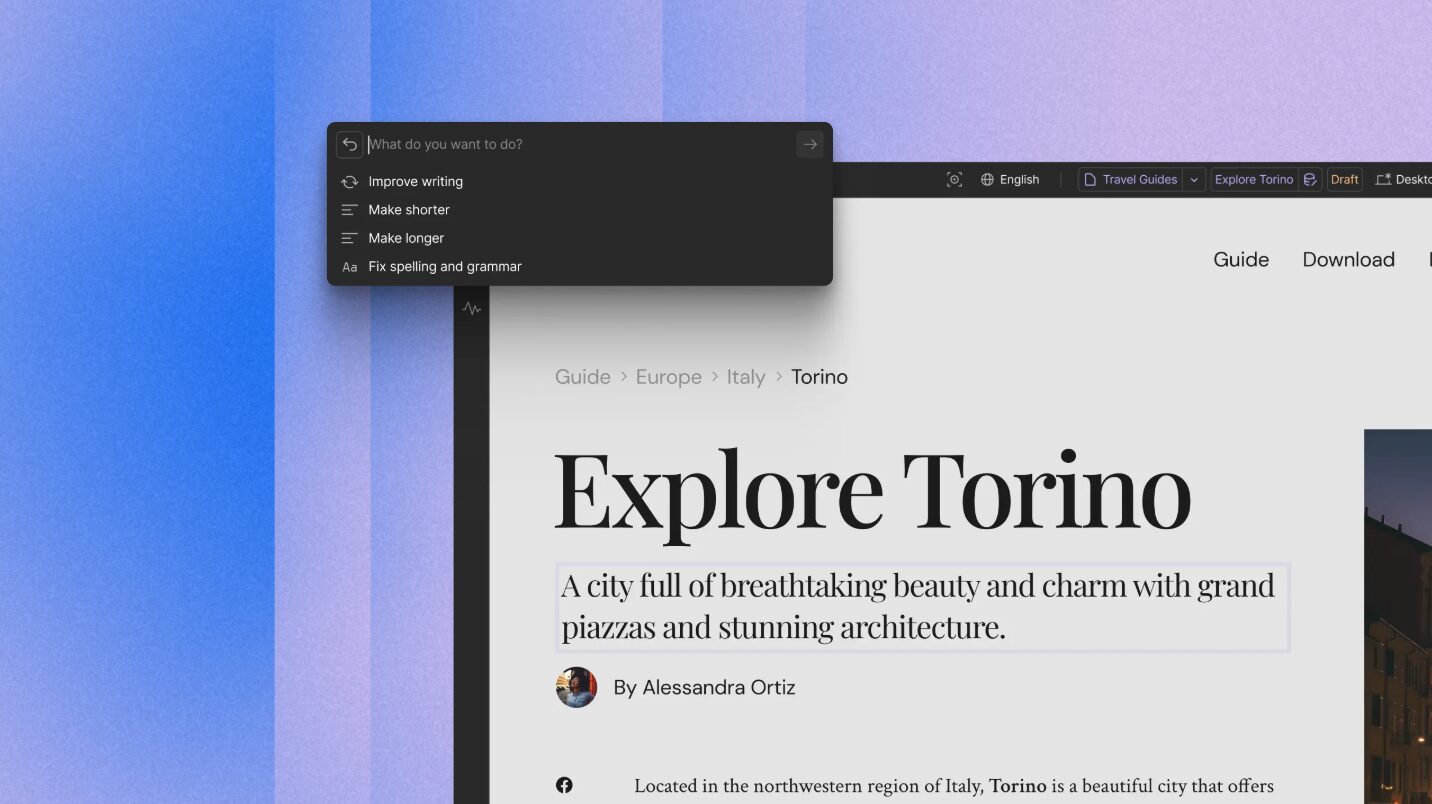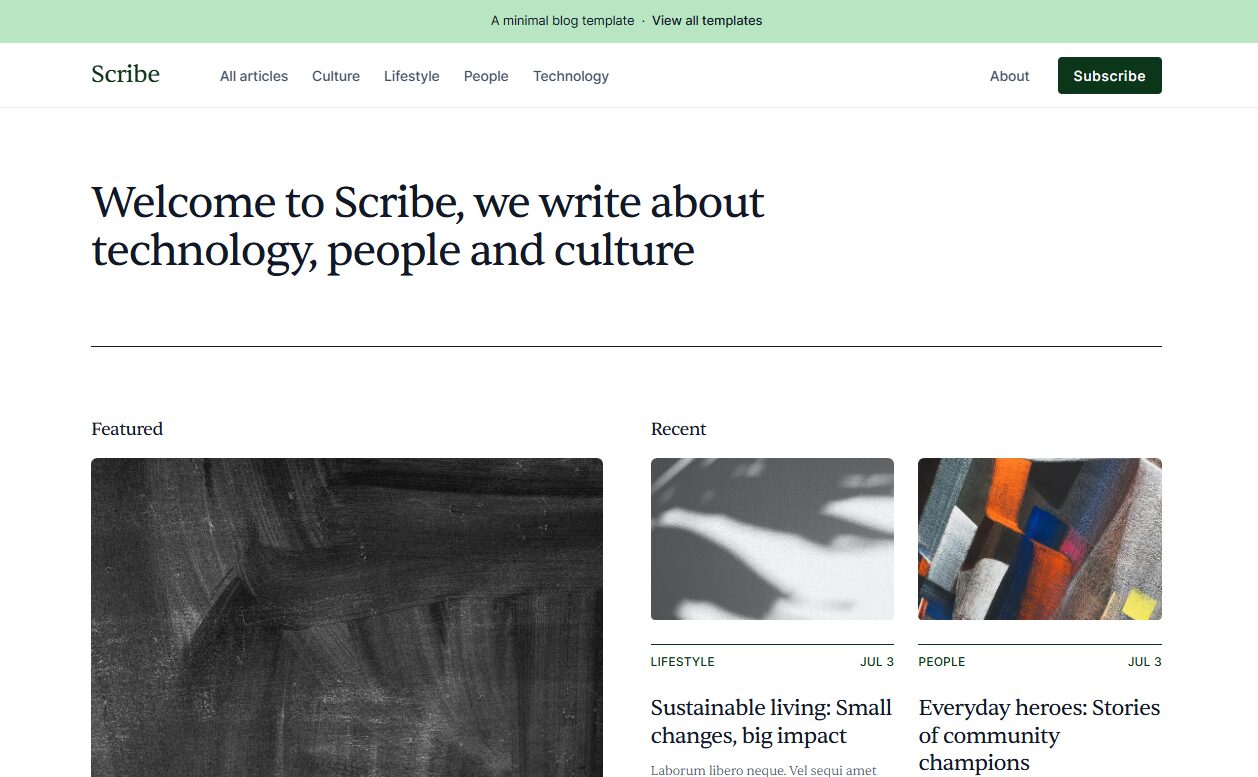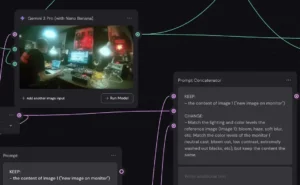
Your portfolio website is your digital flagship. It’s not just a gallery; it’s a client-acquisition tool, a brand statement, and the central hub of your professional universe. In a market flooded with drag-and-drop builders that promise simplicity but deliver mediocrity, Webflow stands out as the platform for professionals who demand granular control without writing code from scratch. But the platform is only as powerful as the foundation you build on. The right template isn’t just about aesthetics—it’s a strategic decision that impacts user experience, client perception, and your bottom line.
This is not a list of the prettiest themes. This is a breakdown of the best Webflow templates engineered for specific creative disciplines. These are starting points designed for customization, built on clean structures that won’t collapse when you start pushing them to their limits. They prioritize what matters: performance, client experience, and making your work the undeniable hero.
Why Webflow is the Right Choice for Creatives
Before diving into specific templates, let’s be clear about why Webflow is the correct platform for a professional creative business. Platforms like Squarespace or Wix are fine for beginners, but they impose creative ceilings. You inevitably hit a wall where you can’t quite execute your vision. Webflow is different. It’s a visual canvas that writes clean, semantic HTML, CSS, and JavaScript.
This gives you three critical advantages:
- Total Design Control: You are not limited by pre-canned blocks and layouts. You can control every property, from precise typographic scales and spacing to complex, multi-step interactions and animations that bring your work to life. If you can design it in Figma or Sketch, you can build it in Webflow.
- A Powerful CMS: The Webflow Content Management System (CMS) is a game-changer for portfolios. You can create custom-structured collections for anything: projects, case studies, blog posts, testimonials, or team members. This means you can update your portfolio by simply filling out a form, without ever touching the designer. It separates content from design, which is how professional web development works.
- Unmatched Performance: When built correctly, Webflow sites are incredibly fast. They offer built-in tools for responsive images, clean code output, and integration with top-tier hosting infrastructure (AWS). For photographers and videographers showcasing high-resolution media, this performance is non-negotiable. A slow-loading portfolio is a lost client.

The Best Webflow Templates for Your Creative Business
A great template gives you a head start with a logical structure, a powerful CMS setup, and a design system that you can easily adapt to your brand. Here are the top templates, broken down by creative discipline.
Aperture: For the Commercial and Editorial Photographer
For photographers, the interface must get out of the way. The work is the only thing that matters. Aperture is built on this principle of minimalist brutalism, combining a stark aesthetic with powerful functionality. It’s designed for photographers who need to present high-resolution images in curated series without compromising on load speed.
Core Features:
- Grid-First Gallery System: Aperture comes with multiple, pre-built CMS-driven gallery layouts: full-screen sliders, masonry grids, and ordered project carousels. Each gallery is designed to handle dozens of high-res images using Webflow’s native responsive image and lazy loading features.
- Detailed Project Pages: The template includes a robust project page structure. It’s not just a wall of images. It has fields for client, shoot location, crew credits, and a rich text block for a project narrative or behind-the-scenes context. This transforms a simple gallery into a professional case study.
- Integrated Client Proofing: Aperture includes a styled and protected page template designed for client proofing. You can password-protect a specific gallery page, allow comments (via a third-party integration like Jotform), and create a seamless client review experience directly on your site.
- Performance-Tuned: The template is pre-configured for speed. It avoids heavy, render-blocking scripts and uses Webflow’s best practices for image optimization from the start.
Canvas: For the Graphic Designer and Brand Strategist
Designers need to show more than just the final product. They need to show the thinking. Canvas is a case-study-driven template designed to showcase the entire design process, from initial concept to final execution. It’s built for designers, illustrators, and brand strategists who need to sell a service, not just a deliverable.
Core Features:
- Modular Case Study Builder: The core of Canvas is its modular CMS for case studies. You can build long-form project pages using pre-designed sections for project goals, typography selections, color palettes, wireframes, and final mockups. You can easily reorder, add, or remove these sections for each project.
- Advanced Typography Control: The template is built with a comprehensive style guide that gives you immediate control over a full typographic scale (H1-H6, paragraph, blockquotes). It’s set up using rem units for perfect scalability and accessibility.
- Lottie & SVG Integration: Canvas has dedicated sections designed for embedding Lottie animations and SVGs, perfect for showcasing logo animations, UI micro-interactions, or complex vector illustrations.
- Services & Inquiry Pages: It includes cleanly designed pages to detail your service offerings and a multi-step inquiry form that helps pre-qualify potential clients by asking the right questions upfront.
Director: For the Videographer and Filmmaker
Video content demands a cinematic presentation. Director is a template built to handle high-resolution video embeds and immersive, full-screen experiences. It’s engineered for filmmakers, directors, and motion graphics artists whose work needs to be seen on the biggest screen possible with zero lag.
Core Features:
- Hero Video Backgrounds: The template’s homepage is built around a full-bleed video background, optimized for performance to ensure it doesn’t kill your page load time.
- CMS for Your Reel: Director uses the Webflow CMS to manage your portfolio of video projects. Each project page is a mini-landing page, with a primary video embed (Vimeo or YouTube), a gallery for behind-the-scenes stills, a project description, and a credits list.
- Cinematic Transitions: It features subtle, tasteful page transitions and scrolling interactions that create a more polished, cinematic user experience without feeling gimmicky or distracting.
- 4K Embed Ready: The layout and styling are designed to accommodate 16:9 video embeds perfectly, ensuring your 4K content looks crisp and professional, with no black bars or awkward resizing.
Founder: For the Multi-Disciplinary Creative Studio
Creative studios and small agencies need a website that reflects their breadth of work without feeling scattered. Founder is a sophisticated, modular template that provides the flexibility to showcase multiple disciplines, team members, and thought leadership in one cohesive package.
Core Features:
- Multi-Portfolio Support: The CMS is pre-configured to handle separate portfolios for different types of work (e.g., Brand Identity, Web Design, Campaigns). You can categorize and filter projects, allowing potential clients to browse only the work that’s relevant to them.
- Team & Culture Pages: Founder includes beautifully designed pages for introducing your team, showcasing your studio space, and outlining your company’s philosophy. This is critical for selling a collaborative partnership, not just a freelancer.
- Integrated Blog for Thought Leadership: The template comes with a fully-featured blog (Journal) section, designed for long-form articles, insights, and industry commentary. This is an essential tool for demonstrating expertise and driving organic traffic.
- Component-Based System: Founder is built more like a design system than a template. It includes a huge library of pre-built components—navbars, footers, call-to-action sections, testimonial sliders—that you can mix and match to create new pages quickly and consistently.
Scribe: For the Writer and Content Strategist
For writers, the words are everything. The design must honor the text. Scribe is a typographically-driven template that prioritizes readability and content hierarchy. It’s perfect for copywriters, journalists, content strategists, and authors who need a platform to publish and archive their work in a clean, professional format.

Core Features:
- Readability First: Scribe is designed with optimal line length, leading, and a clear typographic scale that makes reading long-form content effortless. It includes styles for pull quotes, footnotes, and image captions to break up text and add visual interest.
- Flexible Article Formats: The CMS allows you to publish different types of content, such as long-form articles, photo essays, quick updates, and linked posts. You can easily categorize and tag each piece of content.
- Newsletter Integration: The template is peppered with strategically placed, cleanly designed newsletter signup forms—in the footer, at the end of articles, and as a dedicated landing page. It’s built to help you grow your audience.
- Author Pages: If you plan on having multiple contributors, Scribe has built-in author pages that automatically pull in all articles written by that person, along with a bio and social links.
Beyond the Template: Essential Webflow Setup
Choosing a template is just the first step. To create a truly professional site, you need to execute the setup with precision.
Optimizing for Performance
Your site’s speed is a direct reflection of your professionalism. Slow-loading images or lagging animations are unacceptable.
- Image Compression: Before you upload a single image to Webflow, run it through a compression tool. For JPEGs and PNGs, use a tool like TinyPNG or ImageOptim. This can reduce file sizes by over 70% with no visible loss in quality.
- Use WebP: Where possible, convert your images to the WebP format. It offers much smaller file sizes than JPEG at a comparable quality. Webflow supports WebP, so take advantage of it.
- Leverage Lazy Loading: For image-heavy pages, enable lazy loading. This instructs the browser to only load images that are currently in the viewport, dramatically improving initial page load times.
Leveraging the Webflow CMS
Do not build your portfolio pages statically. Use the CMS. This may seem like more work upfront, but it pays off massively in the long run. By creating a collection for your projects, you can add, remove, and update your portfolio simply by editing items in a database. You never have to touch the main design again. This forces you to think systematically and keeps your site organized and infinitely scalable.
Integrating Your Tools
Your website should be the hub of your business operations. Webflow integrates seamlessly with the professional tools you already use.
- Email Marketing: Embed signup forms from your email provider (ConvertKit, Mailchimp, Flodesk) to capture leads and build your audience.
- Scheduling: Use Calendly or SavvyCal to embed a booking calendar directly on your contact page, allowing clients to schedule a discovery call without the back-and-forth emails.
- Analytics: Integrate Fathom or Plausible Analytics for privacy-focused website analytics. Understand where your traffic is coming from and what content is resonating most with your audience.
Your Website in the Age of AI
In an era where AI can generate content in seconds, a professional, human-curated website is more important than ever. It is your anchor of authenticity. While AI tools can assist in the process—generating drafts for blog posts, brainstorming meta descriptions, or suggesting image alt-text—your website is the definitive showcase of your unique taste, skill, and point of view. It’s the ground truth for your brand.
A powerful website demonstrates that you are not a commodity. It proves that you are a creative professional who invests in quality, obsesses over the details, and understands that the presentation of the work is part of the work itself. This is your platform to articulate your value far beyond what any algorithm can produce.
Building this platform requires a new set of skills that combine creative vision with strategic thinking. To stay ahead of the curve and learn how to leverage new tools to build a thriving creative career, sign up for the newsletter. It’s direct, actionable advice for professionals who are serious about their craft.














